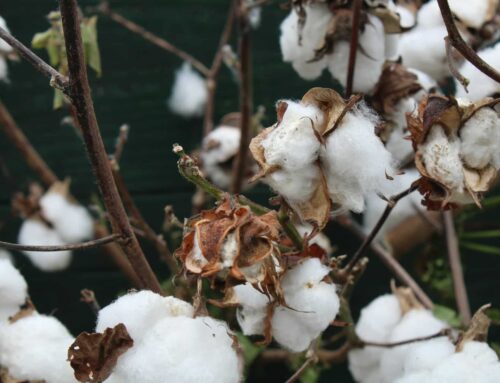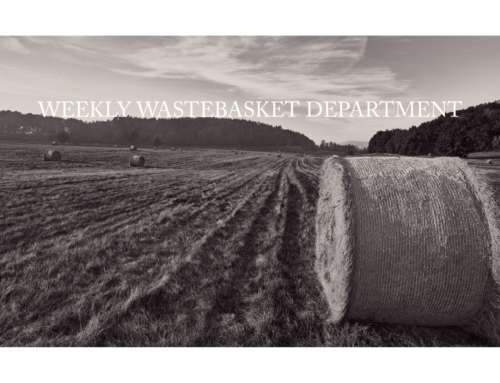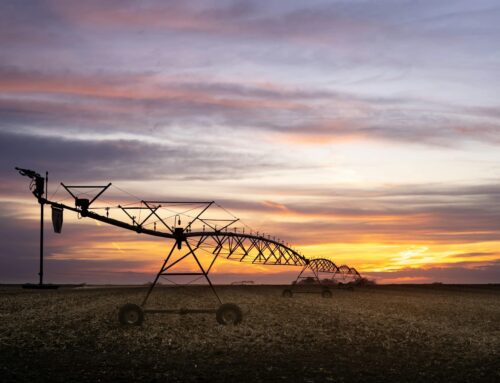Updated April 2014
Despite best intentions, sometimes federal programs do more harm than good and cause unintended consequences that unnecessarily shift costs onto taxpayers. Some of the most prominent examples of Washington picking winners and losers, with costly consequences, can be found in our nation’s agricultural policies. In the U.S., the federal government employs numerous wasteful and duplicative programs and policies to shelter agricultural producers from nearly each and every risk that a business owner could face. Highly-subsidized federal crop insurance, shallow loss entitlements, government-set minimum prices, loan deficiency payments, storage payments, disaster assistance, direct purchasing, and conservation payments are just a handful of the numerous forms of direct federal involvement in agriculture. For more than 75 years, agricultural subsidies have produced numerous unintended consequences that accelerated corporate consolidation in the industry, incentivized producers to plant for Washington instead of the market, inflated land prices, put beginning farmers at a disadvantage, and changed the economics of conserving agricultural land for the next generation. We will explore these in turn.
Federal Agricultural Subsidies
When federal agricultural policy gets in the way of the free market, farmers plant for the government instead of meeting consumer demand. While several market-distorting subsidies are scattered throughout our tax code and energy and agricultural policies, we will focus on the most expensive and ineffective ones that drive consolidation of commodity crop production at the expense of other crops like fruits and vegetables. Producers of the “big five” crops–corn, soybeans, wheat, cotton, and rice–receive the majority of shallow loss entitlement payments, price supports, highly subsidized crop insurance, and other federal income guarantee subsidies. Since the largest and most profitable producers receive a majority of agricultural subsidies, federal policies spur land consolidation.
The definitions of several farm subsidies affecting farm consolidation can be found below:
- Price supports (officially called Price Loss Coverage payments in the 2014 farm bill) are government-set minimum prices that have been on the books in various forms for decades.
- The highly subsidized crop insurance program operates as an income guarantee program for over 120 crops, but the majority of subsidies go to the “big five” crops, ensuring that an expected level of income is received every year, regardless of farm income or whether producers even experience a loss of crops.
- New income guarantee subsidies, or shallow-loss programs in Washington-speak, have added another layer to the expanding subsidy sandwich, ensuring that producers receive a government check if crop revenue falls as little as five or ten percent.
- A federal mandate and historic subsidies for corn ethanol have also changed the agricultural landscape.
According to researchers, the receipt of federal agricultural subsidies alters producers’ risk management decisions in several ways:
- Farm payments and unlimited crop insurance subsidies reduce producers’ business risks while increasing income, allowing farm sizes to increase and production to consolidate.
- Government-set minimum prices (and formerly direct payments) increase liquidity of credit-constrained farmers, influence farm labor decisions, alter land values, and reduce income variability.
- Because crop insurance and shallow loss programs are paid on the current number of planted acres, farmers have an incentive to convert pasture, grasslands, wetlands, and other sensitive land to insurance-eligible crops.
- Federal biofuels mandates have caused farmers to plant certain crops more than others.
Large, Profitable Farms Receive Most Agricultural Subsidies
The majority of agricultural subsidies benefit large producers of the “big five” crops at the expense of taxpayers, smaller producers, and producers of non-favored crops. According to the U.S. Department of Agriculture’s Economic Research Service (USDA-ERS), “farm commodity payments reach only about 25 percent of U.S. farms, although those farms control about 80 percent of cropland and 50 percent of all agricultural land.” And while livestock and specialty crop (fruit and vegetable) producers are eligible for highly subsidized crop insurance, still just four crops – corn, soybeans, wheat, and cotton – take in 80 percent of all premium subsidies (and most other farm subsidies as well). ERS found that large-scale family farms (those with annual sales of $250,000 or more) and nonfamily farms received over 70 percent of commodity payments in 2009. Large producers selling more than $1 million of agricultural goods received a median level of subsidies in 2007 of $42,000.
Even though producers and landowners reaping the most payments are highly profitable, they continue to receive taxpayer subsidies due to lax enforcement and loopholes in eligibility rules. In 2013, the Government Accountability Office (GAO) found that individuals deemed ineligible for farm subsidies (those earning more than $1.25 million in adjusted gross income annually) continue to receive millions in tax dollars due to a lack of oversight by USDA. Large-scale farms enjoyed median income of $127,009 in 2011, an increase of eight percent from 2010, while the average U.S. farm reported median income of less than half this amount -$57,050. And despite recent droughts and variations in crop prices, agricultural producers have enjoyed record years of profits and are projected to reap above-average income in the coming years. Especially in this fiscal environment, sending farm subsidy checks to highly profitable producers and landowners less likely to conserve land for future generations should be questioned.
Consolidation in Agriculture
Government subsidies have accelerated the pace of agricultural consolidation. From 2002 to 2007, the number of farms required to produce 75 percent of agricultural production declined from 144,000 to 125,000. The total number of U.S. farms has also declined from 6.8 million farms in 1935 to about 2.2 million today. Consolidation has occurred on both family and nonfamily farms. While 98 percent U.S. farms are family owned, large-scale and nonfamily operations “account for 12 percent of farms but 84 percent of the value of production.” Over the past 30 years, the number of small farms has declined whereas the number of farms organized as partnerships and corporations steadily increased and those with sales over $1 million per year more than tripled (even with constant dollars).
Land Consolidation
One of the most prominent unintended consequences of farm subsidies is inflated land prices and consolidation of farmland in the hands of a few profitable landowners. USDA-ERS reports that when agricultural subsidy payments increase income from farm production, “the expectation of future payments may be capitalized into the value of farmland.” Researchers’ findings about the impacts of various government farm subsidies on land prices and farm consolidation include:
- Some farm subsidy payments fail to reach their intended target – working farm families – and instead fall into the hands of landlords. In the Northern and Southern Plains and Corn Belt, non-operating landlords own more than 30 percent of all farmland and 77 percent of farmland that is rented. USDA-ERS also found that “cropland consolidated more rapidly in those zip codes with higher levels of Government payments.” According to USDA’s former Chief Economist, farmland values have increased 15 to 25 percent due to farm subsidy payments, benefiting all landowning farm households regardless of whether they are direct recipients of farm subsidies. This has led to over twenty-five years of land concentration growth.
- Crop insurance subsidies result in increases in cropland values, especially in recent years when indemnity payments have exceeded premiums paid by farmers by a 2-to-1 margin. USDA-ERS found that producers with expanded insurance coverage became more specialized as subsidies increased over time. These issues will become more apparent since crop insurance subsidies were expanded in the 2014 farm bill, and new shallow loss entitlement programs were created to cover small dips in agribusiness income.
- Loan deficiency payments, “which pay when market prices fall below the local loan rate— can add significantly to the value of land, due to reduced variability of farm earnings and more certain cash flow.”
Greater Use of Other Risk Management Tools
Agricultural consolidation can also be attributed to recent structural changes in the industry. Producers have taken advantage of contracting, technological advancements, bigger equipment, new seed hybrids, greater use of herbicides and insecticides, and other risk management tools to mitigate risks; as a whole, these advancements, often subsidized by federal investments, decrease the cost of doing business and allow operations to increase farm sizes.
Subsidy-driven Concentration at Expense of Other Crops
When producers plant for Washington instead of the free market, winners – mainly commodity crops – are chosen at the expense of other crops. Federal subsidies for crops and mandates for corn ethanol production have incentivized producers to plant more acres of corn in recent years while plantings of oats, barley, alfalfa, and others have declined; up to six percent more acres are in production because of government intrusions in the marketplace. Production has also become more concentrated for subsidized crops like corn, soybeans, and cotton, but not for less subsidized crops such as fruits and vegetables. Not long ago, most farmers raised livestock and grew anywhere from five to ten different crops. As the agriculture industry consolidated, subsidy payments increased, and the size of farms grew, producers – mostly large-scale ones – began to specialize in just a few crops. In fact, the largest farms have diversified the least over time, but still received over two-thirds of all farm subsidy payments. ERS found that “in 2007, operators of farms with sales above $250,000 harvested more than three-fourths of the total acres of program crops—barley, canola, corn, cotton, oats, peanuts, rice, sorghum, soybeans, and wheat.”
More specific effects of subsidies on crop choices and farm consolidation are listed below:
- Government-set minimum prices (and new shallow loss entitlement programs) may “encourage farmers to plant the program crop for which they have base acreage” even if it is riskier to do so; producers may forgo other risk management techniques with the availability of farm subsidy payments each year.
- Higher subsidies for federal crop insurance after passage of the 1994 Federal Crop Insurance Reform Act resulted in increased farm specialization as producers relied less on private risk management options and more on federal programs.
Unintended Consequences
Numerous unintended consequences can arise from agricultural consolidation and misdirected farm subsidy payments. When farmland prices are inflated due to various subsidy payments, young and beginning farmers are put at a disadvantage when trying to afford land and high startup costs. The price of U.S. farmland alone has more than doubled from just a decade ago. While there is a lot of talk in Congress about helping young and beginning farmers, USDA statistics show that this group of farmers is less likely to benefit from federal crop insurance subsidies and conservation and commodity programs than established farmers.
In addition, “if production becomes geographically concentrated, the byproducts of production, such as manure or chemical use (including nutrients and pesticides), also become more localized.” The likelihood of downstream water pollution increases as agriculture is consolidated onto fewer fields. It’s no surprise that the most input-intensive and widely produced crops – corn, cotton, soybeans, and wheat – also happen to be those that are heavily subsidized by the government. Finally, since nonoperating landlords and large-scale farms are more likely to enroll in commodity subsidy programs as opposed to conservation programs, there is a question of whether federal payments are benefiting the rural economy and helping conserve agricultural land for future generations, as they were intended.
Conclusion
Due to their numerous adverse effects, federal farm subsidies should be limited to allow the private market to play a greater role in the risk management decisions of agricultural producers. Risk is a good and necessary aspect in business, and producers must not be restricted from taking more responsibility for ensuring the profitability of their operations. Instead of picking winners and losers by passing new income guarantee subsidies that will only further accelerate agricultural consolidation, Congress must reduce the federal footprint in agriculture by enacting a more cost-effective, accountable, transparent, and responsive agricultural safety net.
For more information contact Joshua Sewell, josh at taxpayer.net.














Get Social